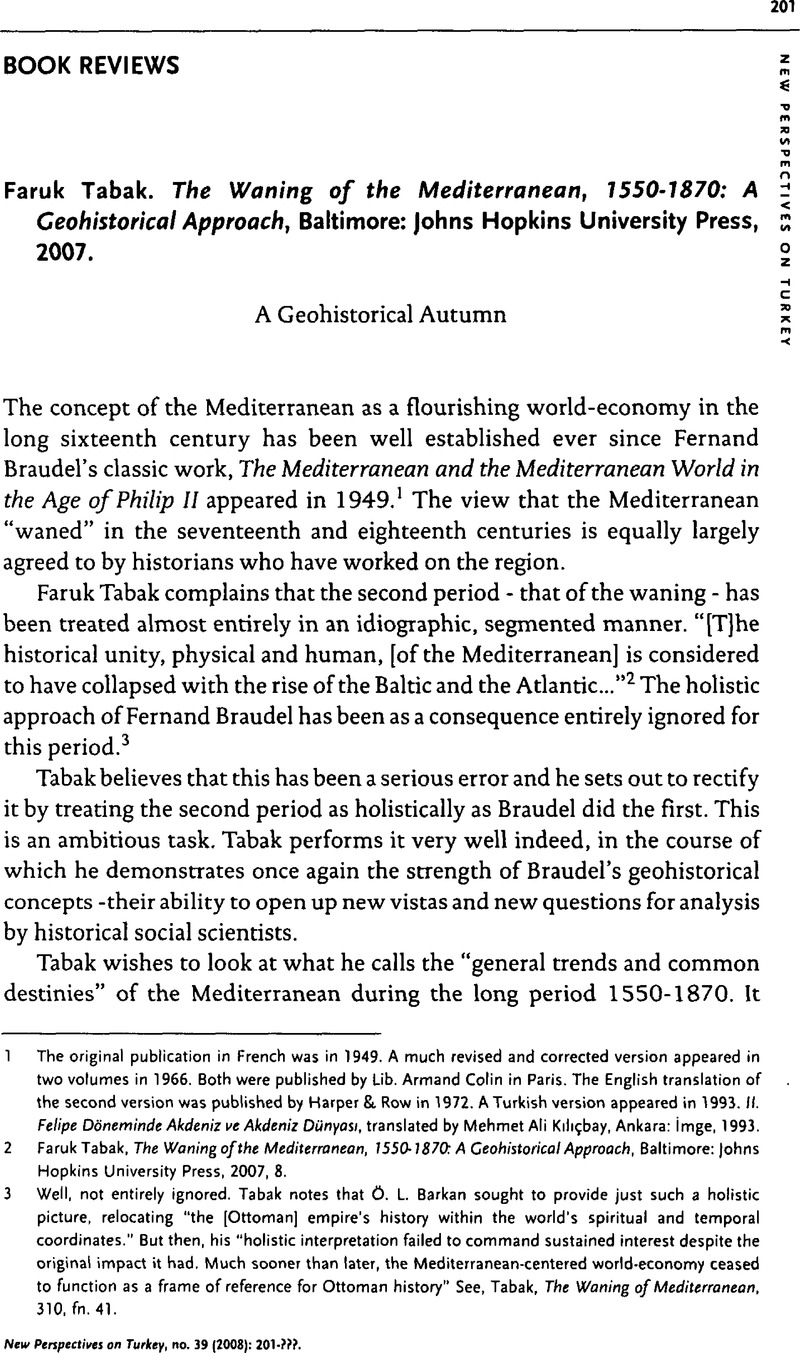No CrossRef data available.
Published online by Cambridge University Press: 21 July 2015

1 The original publication in French was in 1949. A much revised and corrected version appeared in two volumes in 1966. Both were published by Lib. Armand Colin in Paris. The English translation of the second version was published by Harper & Row in 1972. A Turkish version appeared in 1993. II. Felipe Döneminde Akdeniz ve Akdeniz Dünyası, translated by Kılıçbay, Mehmet Ali, Ankara: İmge, 1993Google Scholar.
2 Tabak, Faruk, The Waning of the Mediterranean, 1550-1870: A Geohistorical Approach, Baltimore: Johns Hopkins University Press, 2007, 8Google Scholar.
3 Well, not entirely ignored. Tabak notes that Ö. L. Barkan sought to provide just such a holistic picture, relocating “the [Ottoman] empire's history within the world's spiritual and temporal coordinates.” But then, his “holistic interpretation failed to command sustained interest despite the original impact it had. Much sooner than later, the Mediterranean-centered world-economy ceased to function as a frame of reference for Ottoman history” See, Tabak, , The Waning of Mediterranean, 310, fn. 41Google Scholar.
4 Ibid., 10.
5 Ibid., 305. This was not entirely positive for the small peasants. “Maize… may have replaced other crops in polenta, but it also invited pellagra. It made and unmade the fortunes of peasant households… (These crops] simply served as ‘famine relief crops’ in the seventeenth and eighteenth centuries.” See, Ibid.
6 Ibid., 16.
7 Ibid.
8 Ibid., 17.
9 Ibid., 307.
10 Ibid., 16.
11 Ibid., 19.
12 Ibid., 20-21.
13 Ibid., 21.
14 Ibid., 22.